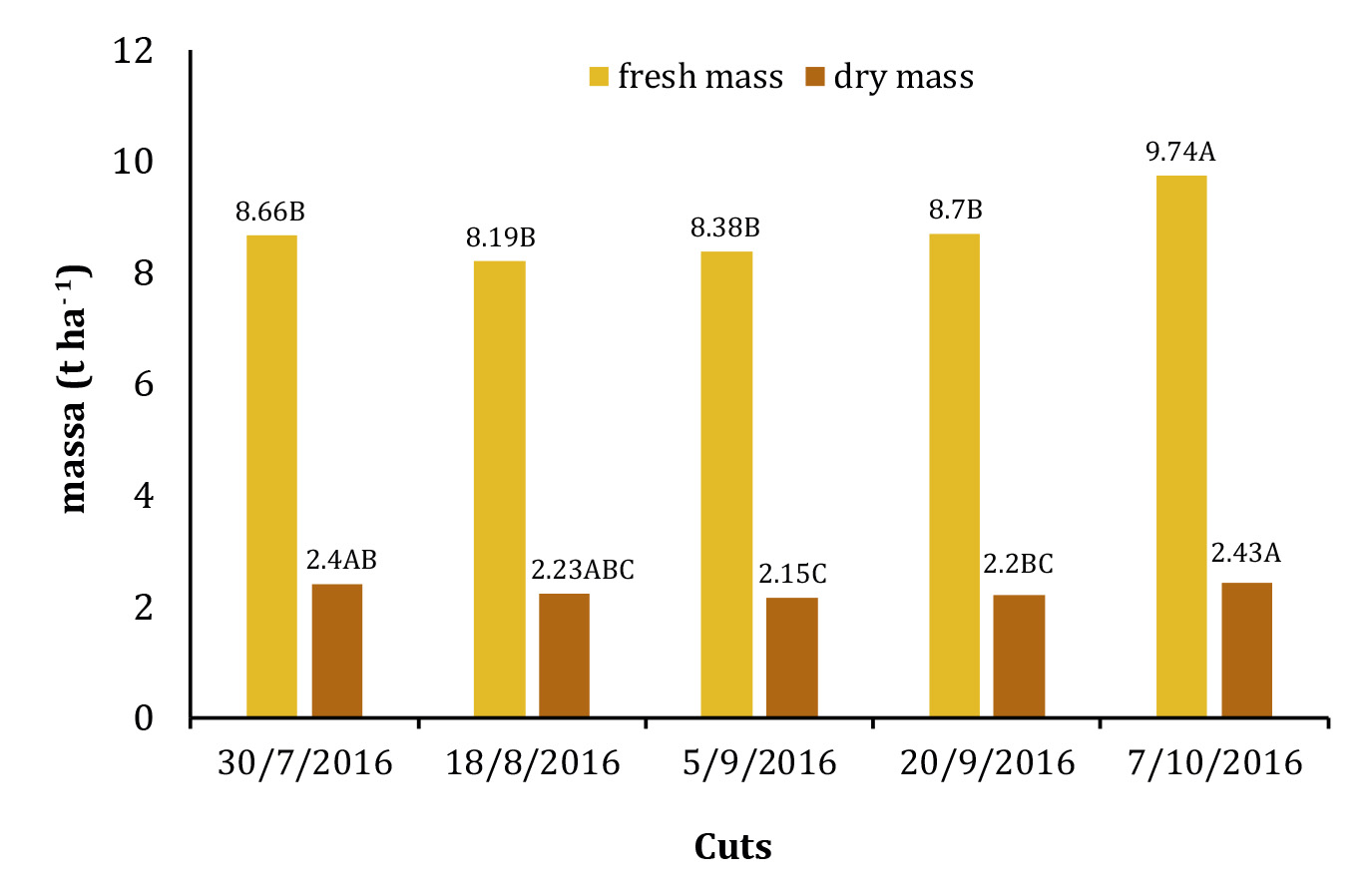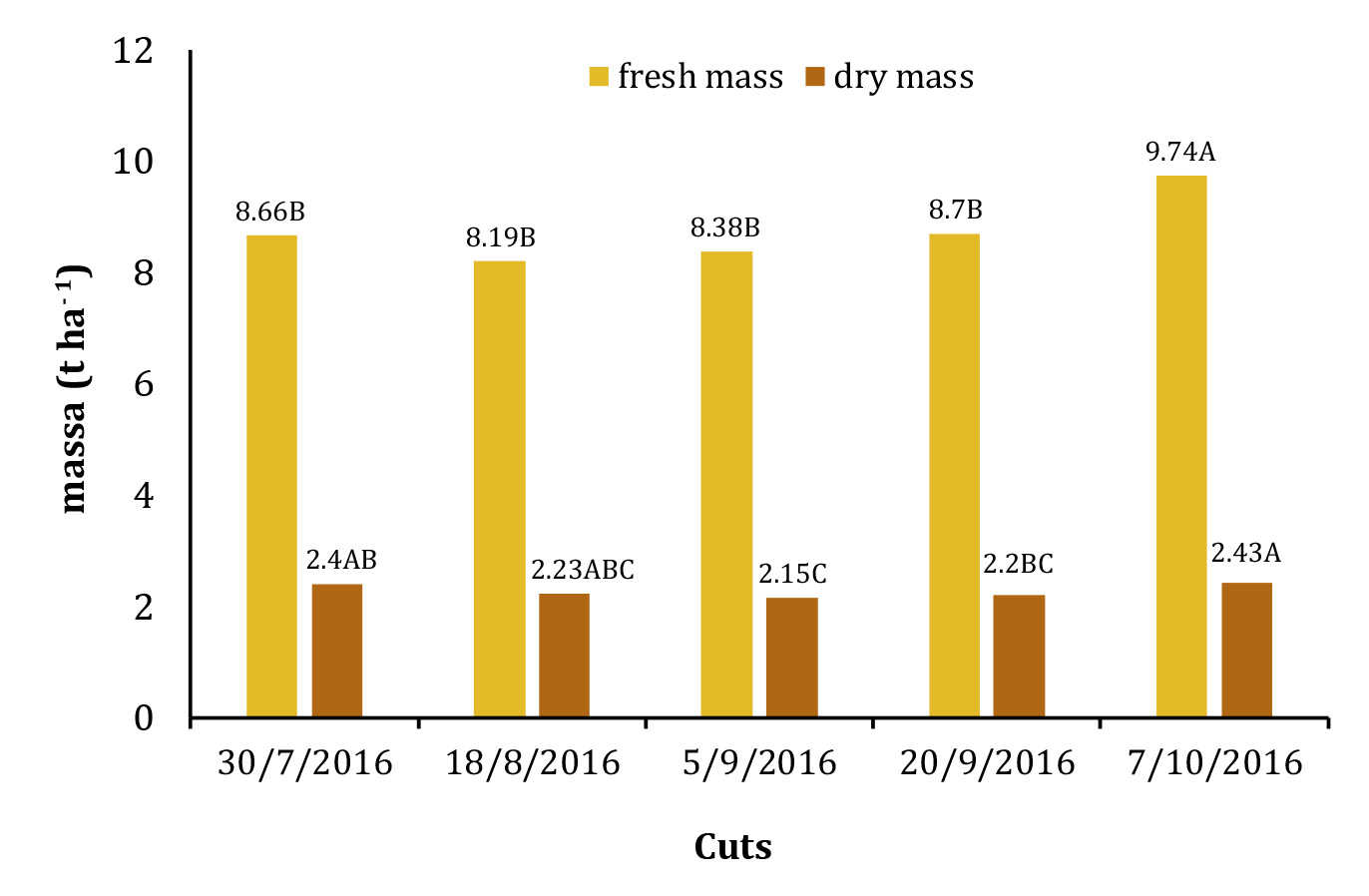Responses of Panicum and Brachiaria to irrigation during winter in the Goiás’ Cerrado-Brazil
DOI:
https://doi.org/10.48162/rev.39.088Palabras clave:
forage, fresh weight, dry weight, tillering, supplementary irrigationResumen

Forage production in the Cerrado is based on well-defined seasons: a rainy summer, and a dry winter. To define strategies that minimize the seasonality of forage production, responses in growth and biomass accumulation of five irrigated forages were evaluated during winter. The experimental design was randomized blocks, in a split plot arrangement, with five replicates, five forages in the plots (three of Panicum maximum - Mombasa, Tanzania, and Masai; two of Brachiaria brizantha - piatã and MG5), and five cuts in the subplots made from July to October 2016. Forages were cultivated with centre-pivot irrigation and the water level was defined according to the reference evapotranspiration determined through a Class A pan evaporation method, 0.8 kc, and two-day irrigation shifts. The number of shoots, leaves/tiller, leaves/plant, fresh leaf and stem biomass, dry leaf and stem biomass, fresh leaf mass/fresh stem mass ratio, dry leaf mass/dry stem mass ratio, and biomass accumulated in the five cuts were calculated. Irrigated forage during winter in the Goiás’ Cerrado showed satisfactory growth, reaching a lower plant height between cuts than those reported in the literature. Among the Panicum grasses, Mombasa grass stood out, and MG was superior to piatã grass.
Highlights
- The forages Panicum maximum - Mombasa, Tanzania, and Masai -; and Brachiaria brizantha - piatã and MG5 -, presented satisfactory responses in growth and biomass accumulation in an irrigated culture during winter in the Goiás’ Cerrado.
- The Mombasa grass stood out among the forage of the genus Panicum and MG5 in the Brachiaria.
- The Mombasa and Brachiaria MG5 grasses are recommended for cultivation of irrigated forage during the winter in the Goiás’ Cerrado.
Descargas

Descargas
Publicado
Cómo citar
Número
Sección
Licencia
Derechos de autor 2022 Revista de la Facultad de Ciencias Agrarias UNCuyo

Esta obra está bajo una licencia internacional Creative Commons Reconocimiento-NoComercial-CompartirIgual 3.0.
Aquellos autores/as que tengan publicaciones con esta revista, aceptan las Políticas Editoriales.










.jpg)




